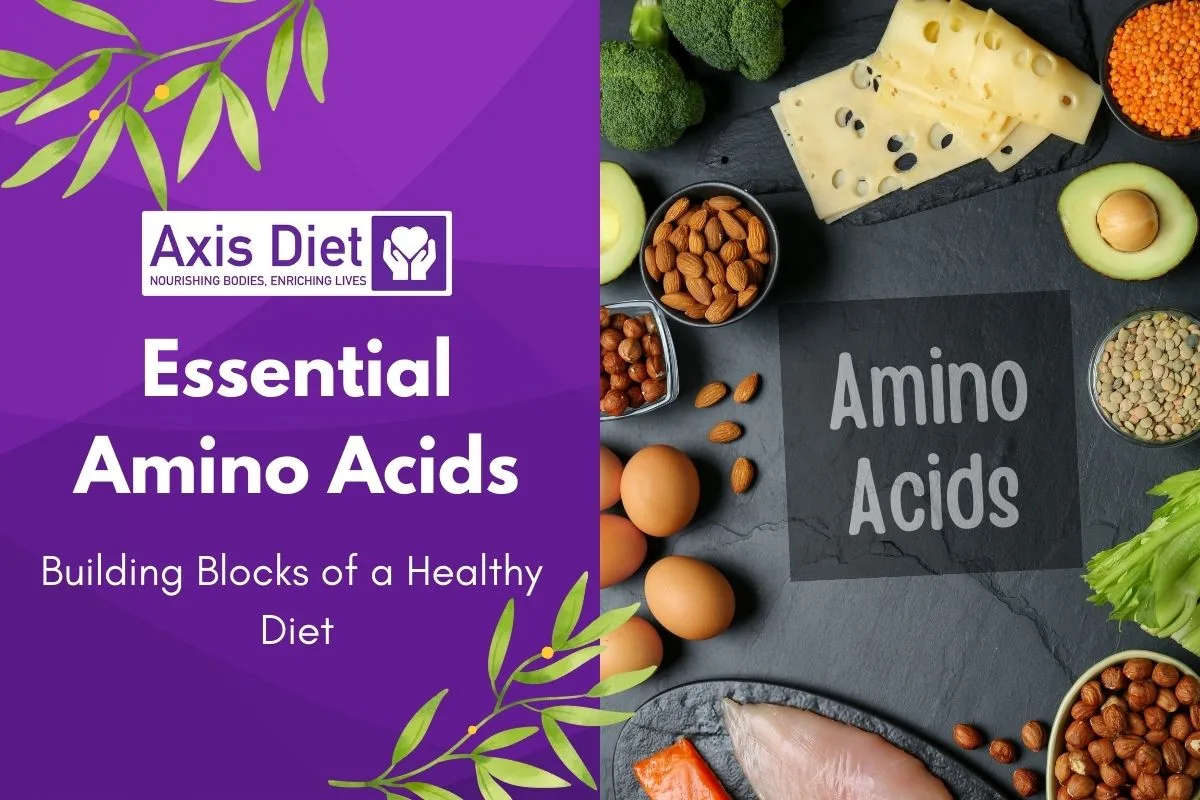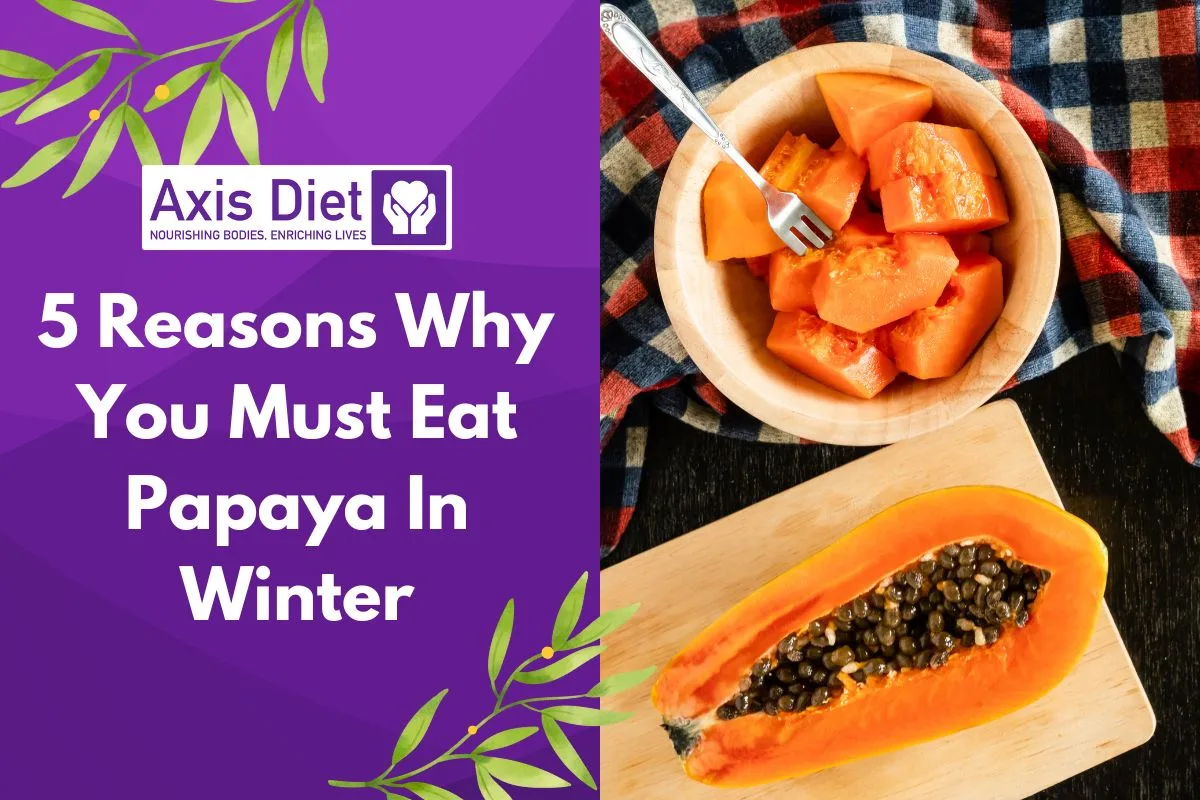In this guide, we’ll dive into how Essential Amino Acids (EAAs) impact everything from muscle development to mood regulation, especially in the context of India’s unique dietary landscape.
Whether you’re a fitness enthusiast, a vegetarian, or someone seeking a healthier lifestyle, understanding EAAs is key to enhancing your diet and overall well-being. Join us as we unfold the secrets of these crucial nutrients and provide you with practical tips to enrich your meals with their benefits. Get ready to transform your dietary habits with the power of amino acids! 🌟🥗💪🍲
What We’ll Cover
- What Are Amino Acids?
- Common Nutritional Deficiencies Related to Essential Amino Acids (EAAs) in India
- Best Protein Sources for Indian Vegetarian Diet
- Optimal Protein Sources for Indian Non-Vegetarian Diet
- Common Questions Asked about Essential Amino Acids in Diet
- What are essential amino acids and why are they important?
- Are animal proteins better than plant proteins?
- Can I get all essential amino acids from a vegetarian diet?
- How can vegans ensure they are getting enough essential amino acids?
- Is it necessary to eat complementary proteins in the same meal?
- Can I get enough protein from a plant-based diet for muscle building?
- What are some high-protein foods for vegetarians in India?
- How much protein do I need daily?
- Are protein supplements necessary?
- Can too much protein be harmful?
- Conclusion: Empowering Your Health Journey with Essential Amino Acids
What Are Amino Acids?
Amino acids are organic compounds that are vital to human health and well-being. They are often referred to as the building blocks of proteins, which are crucial for the structure and function of all cells in our bodies. Proteins formed from amino acids are not just building materials; they also play a key role in processes such as muscle repair, the synthesis of enzymes and hormones, the regulation of metabolic pathways, and neurotransmitter production.
In our bodies, amino acids facilitate a myriad of physiological functions. They are involved in the repair and growth of muscles, making them particularly important for individuals engaged in regular physical activity or those recovering from injuries. Amino acids also contribute to the synthesis of neurotransmitters like serotonin and dopamine, which are essential for cognitive functions and emotional well-being. Additionally, they play a critical role in the production of energy, helping to convert food into usable fuel for our cells.
Furthermore, amino acids are instrumental in maintaining the body’s immune response. They help in the production of antibodies and support the health of the intestinal mucosa, which plays a crucial role in defending against pathogens. The significance of amino acids extends to the maintenance of healthy skin, hair, and nails, as they are essential components of collagen, keratin, and elastin.
Given their wide-ranging roles, a balanced intake of amino acids is vital for maintaining optimal health. There are twenty standard amino acids, which are classified into two groups: essential and non-essential amino acids.
Essential Amino Acids EEAs and Primary Functions
- Histidine – Essential for growth, tissue repair, and the production of blood cells. Plays a key role in maintaining the myelin sheath that surrounds nerve cells.
- Isoleucine – Involved in muscle metabolism, immune function, hemoglobin production, and energy regulation. Heavily concentrated in muscle tissues.
- Leucine – Crucial for protein synthesis, wound healing, and muscle repair. Also helps in regulating blood sugar levels and stimulating growth hormone production.
- Lysine – Vital for protein synthesis, hormone and enzyme production. Important in the absorption of calcium and plays a key role in collagen formation.
- Methionine – Important for metabolism and detoxification. Necessary for tissue growth and the absorption of zinc and selenium, crucial minerals for health.
- Phenylalanine – A precursor for neurotransmitters such as dopamine, norepinephrine, and epinephrine. Also plays a role in the structure and function of proteins and enzymes.
- Threonine – Plays a critical role in collagen and elastin synthesis, contributing to skin and connective tissue health. Also important for immune system function.
- Tryptophan – Necessary for the production of serotonin, a neurotransmitter that regulates appetite, sleep, mood, and pain. Also a precursor for melatonin, which regulates sleep-wake cycles.
- Valine – Stimulates muscle growth and regeneration. Also involved in energy production and the maintenance of proper nitrogen balance in the body.
Common Nutritional Deficiencies Related to Essential Amino Acids (EAAs) in India
India’s nutritional landscape is marked by significant challenges, particularly protein-energy malnutrition and micronutrient deficiencies. This situation is more pronounced among certain populations, especially children, where the impact on health and development can be long-lasting.
Protein-Energy Malnutrition
Protein-energy malnutrition (PEM) is a critical health issue in India, often stemming from a lack of adequate protein intake. This type of malnutrition can lead to stunted growth, weakened immunity, and impaired brain development in children. Essential amino acids play a crucial role in combating PEM, as they are vital components of dietary proteins needed for growth, repair, and normal functioning of the body.
Iron Deficiency
Iron deficiency is another common issue, particularly among women and children, leading to conditions like anemia. This deficiency impacts cognitive and physical development in children and can lead to fatigue and decreased work capacity in adults. Foods rich in EAAs often overlap with good sources of iron. For example, legumes such as lentils and beans, while being excellent sources of protein, are also high in iron. Incorporating these into daily meals can help address iron deficiency.
Vitamin A Deficiency
Vitamin A deficiency, which can lead to impaired vision and a higher risk of infections, is another concern in India. While EAAs themselves do not contain vitamin A, diets balanced in EAAs are often rich in a variety of foods, some of which are good sources of vitamin A (like dairy products, eggs, and meat for non-vegetarians). For vegetarians, pairing these protein-rich foods with fruits and vegetables high in beta-carotene (which the body converts to vitamin A) can be beneficial.
Iodine Deficiency
Iodine is essential for thyroid function, and its deficiency can lead to goiter and other thyroid-related disorders. While EAAs do not directly provide iodine, a diet diverse in sources of EAAs typically includes seafood and dairy products, which are good sources of iodine.
B Vitamin Deficiency
B vitamins are crucial for various metabolic processes. Legumes and pulses, which are rich in EAAs, also contain significant amounts of B vitamins. These nutrients are vital for energy metabolism, brain function, and DNA synthesis.
Best Protein Sources for Indian Vegetarian Diet
In a vegetarian diet, especially in the Indian context, obtaining complete protein, which includes all nine essential amino acids (EAAs), requires a little planning. Pulses and cereals, when combined, can provide a complete protein profile. This is because pulses (like lentils, beans, and peas) and cereals (like wheat, rice, and maize) have complementary amino acid profiles.
Pulses: Rich in Lysine, Low in Methionine
Pulses are a staple in the Indian vegetarian diet and are an excellent source of protein. They are particularly rich in the amino acid lysine, which is often lacking in cereals. However, pulses typically have lower levels of methionine and cysteine, which are sulfur-containing amino acids.
Cereals: Rich in Methionine, Low in Lysine
Cereals, another staple of the Indian diet, are generally good sources of methionine and cysteine but are low in lysine. This makes them a perfect complement to pulses.
Combining Pulses and Cereals for Complete Protein
To ensure a balanced intake of all essential amino acids, vegetarians should focus on combining pulses with cereals. Here are some classic Indian combinations that provide complete protein:
- Rice and Dal: A traditional Indian dish where dal (lentils) provides lysine and rice provides methionine.
- Roti (Whole Wheat Bread) and Chana (Chickpeas): Whole wheat in roti is rich in methionine, while chana offers lysine.
- Rajma (Kidney Beans) and Rice: Kidney beans are high in lysine, and when combined with rice, which provides methionine, it becomes a complete protein.
- Khichdi (Rice and Lentils): A comforting meal combining rice and lentils, providing a complete range of amino acids.
- Idli or Dosa with Sambar: These South Indian staples made from fermented rice and urad dal (black lentils) batter, when combined with sambar (lentil-based vegetable stew), offer a complete protein profile.
Other Vegetarian Protein Sources
In addition to pulses and cereals, there are other vegetarian foods that can contribute to protein intake:
- Dairy Products: Milk, cheese, and yogurt are excellent sources of complete protein.
- Soy Products: Foods like tofu, tempeh, and soy milk are complete proteins and can be a central part of a vegetarian diet.
- Nuts and Seeds: While not complete proteins on their own, they can contribute significantly to overall protein intake.
It’s important to note that while combining different protein sources is key, they don’t necessarily have to be eaten in the same meal. Consuming a variety of protein sources throughout the day can ensure a balanced intake of amino acids.
Optimal Protein Sources for Indian Non-Vegetarian Diet
For those following a non-vegetarian diet in India, there are ample opportunities to consume a balanced intake of all nine essential amino acids (EAAs). Non-vegetarian foods often contain complete proteins, meaning they provide all the EAAs in sufficient amounts. Here’s a guide to the best non-vegetarian protein sources and how they can complement a balanced diet:
Meat, Poultry, and Fish
- Chicken and Turkey: Lean meats like chicken and turkey breasts are high-quality protein sources, providing all EAAs without much saturated fat.
- Red Meat: Lamb, goat, and beef are rich in protein, iron, and B12, but should be consumed in moderation due to their high saturated fat content.
- Fish: Fish, especially fatty fish like salmon, mackerel, and sardines, are not only excellent sources of protein but also provide omega-3 fatty acids, essential for heart and brain health.
- Seafood: Shrimp, crab, and other seafood offer high protein content with lower levels of saturated fat compared to most meats.
Eggs
Eggs are a staple in many diets and are considered a ‘complete protein,’ providing all nine EAAs. They are also versatile and can be included in various meals.
Dairy Products
Milk, cheese, and yogurt are excellent sources of protein for non-vegetarians. They also provide calcium, vitamin D, and other essential nutrients.
Combining Non-Vegetarian and Vegetarian Sources
In a non-vegetarian Indian diet, combining animal and plant-based proteins can ensure a diverse and balanced intake of EAAs. Here are some effective combinations:
- Meat or Fish with Lentils or Beans: A serving of chicken or fish with a side of dal or rajma provides a well-rounded protein profile.
- Eggs with Whole Grains: Scrambled or boiled eggs served with whole grain bread or roti make for a complete protein meal.
- Dairy with Nuts and Seeds: A yogurt parfait with nuts and seeds offers a nutritious, protein-rich snack.
While non-vegetarian foods provide complete proteins, it’s important to balance the diet with plenty of fruits, vegetables, and whole grains. This not only ensures a variety of nutrients but also helps in maintaining a healthy weight and reducing the risk of chronic diseases.
Incorporating a mix of both animal and plant-based proteins can provide the full range of amino acids while also offering other essential nutrients like fiber, healthy fats, vitamins, and minerals. Moderation and variety are key in a non-vegetarian diet to ensure all nutritional needs are met and to maintain overall health and well-being.
Common Questions Asked about Essential Amino Acids in Diet
What are essential amino acids and why are they important?
Essential amino acids (EAAs) are amino acids that the body cannot synthesize on its own and must be obtained through diet. They are crucial for numerous bodily functions such as building proteins, repairing tissues, and synthesizing hormones and neurotransmitters.
Are animal proteins better than plant proteins?
Animal proteins are often referred to as “complete proteins” because they contain all the essential amino acids in the right proportions. However, plant proteins can be combined to provide all essential amino acids. Both sources are valuable and choosing between them depends on dietary preferences, ethical considerations, and health needs.
Can I get all essential amino acids from a vegetarian diet?
Yes, you can obtain all essential amino acids from a vegetarian diet by combining different plant-based protein sources. Common combinations include rice with lentils or beans, and bread with peanut butter, which together provide a complete protein profile.
How can vegans ensure they are getting enough essential amino acids?
Vegans can ensure adequate intake of essential amino acids by eating a variety of protein-rich plant foods such as legumes, grains, nuts, seeds, and soy products throughout the day.
Is it necessary to eat complementary proteins in the same meal?
It was once believed that complementary proteins had to be eaten together, but research shows it’s not necessary. As long as you eat a variety of protein sources throughout the day, your body can get all the essential amino acids it needs.
Can I get enough protein from a plant-based diet for muscle building?
Yes, you can build muscle on a plant-based diet. Eating a variety of protein-rich plant foods and ensuring adequate overall protein intake are key. Foods like lentils, chickpeas, tofu, and quinoa are great options.
What are some high-protein foods for vegetarians in India?
High-protein vegetarian foods in India include lentils (dal), chickpeas (chana), kidney beans (rajma), paneer, milk, yogurt, nuts, and seeds. Traditional dishes like dal with rice or roti provide a complete protein.
How much protein do I need daily?
Protein needs vary depending on age, gender, activity level, and health status. Generally, adults need about 0.8 grams of protein per kilogram of body weight per day. Athletes and pregnant women may require more.
Are protein supplements necessary?
For most people, a balanced diet provides enough protein without the need for supplements. However, supplements can be beneficial for athletes, bodybuilders, or people with specific dietary restrictions.
Can too much protein be harmful?
Excessive protein intake, especially from animal sources, can put a strain on the kidneys and may be associated with other health issues like heart disease. It’s important to consume protein in moderation and as part of a balanced diet.
Conclusion: Empowering Your Health Journey with Essential Amino Acids
As we conclude our exploration of essential amino acids and their significant role in enhancing our daily diet and overall well-being, it’s important to remember the power of informed choices. The insights and suggestions provided in this guide aim to empower you, our Axis Diet readers, with knowledge about the crucial functions of these nutrients, and how incorporating a variety of protein sources can enrich your health journey, whether you follow a vegetarian, non-vegetarian, or mixed diet.
We hope this article has shed light on the importance of EAAs and inspired you to make mindful dietary choices that align with your health goals and lifestyle preferences. Remember, a balanced and diverse diet is key to achieving optimal health, and incorporating the right mix of essential amino acids can be a significant step towards this goal.
Disclaimer
This article is intended for general informational purposes only and does not address individual circumstances. It is not a substitute for professional advice or help and should not be relied on to make decisions of any kind. A licensed physician should be consulted for diagnosis and treatment of any medical conditions. Any action you take upon the information presented in this article is strictly at your own risk and responsibility!
Embark on your health journey with awareness and care, and always prioritize your well-being with informed choices and professional guidance. Here’s to your health and vitality with Axis Diet! 🌟💚🍏






[…] every cell in the human body, particularly affecting DNA synthesis and regulation, as well as fatty acid and amino acid […]